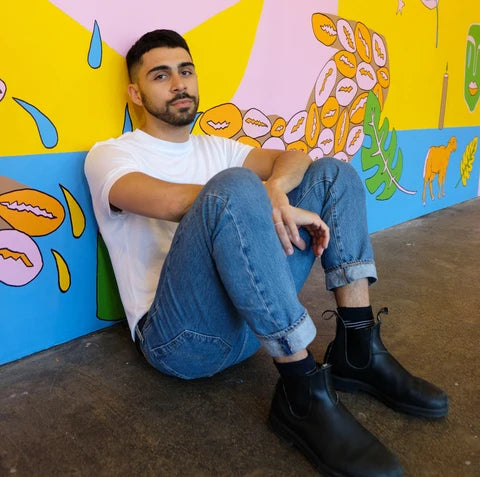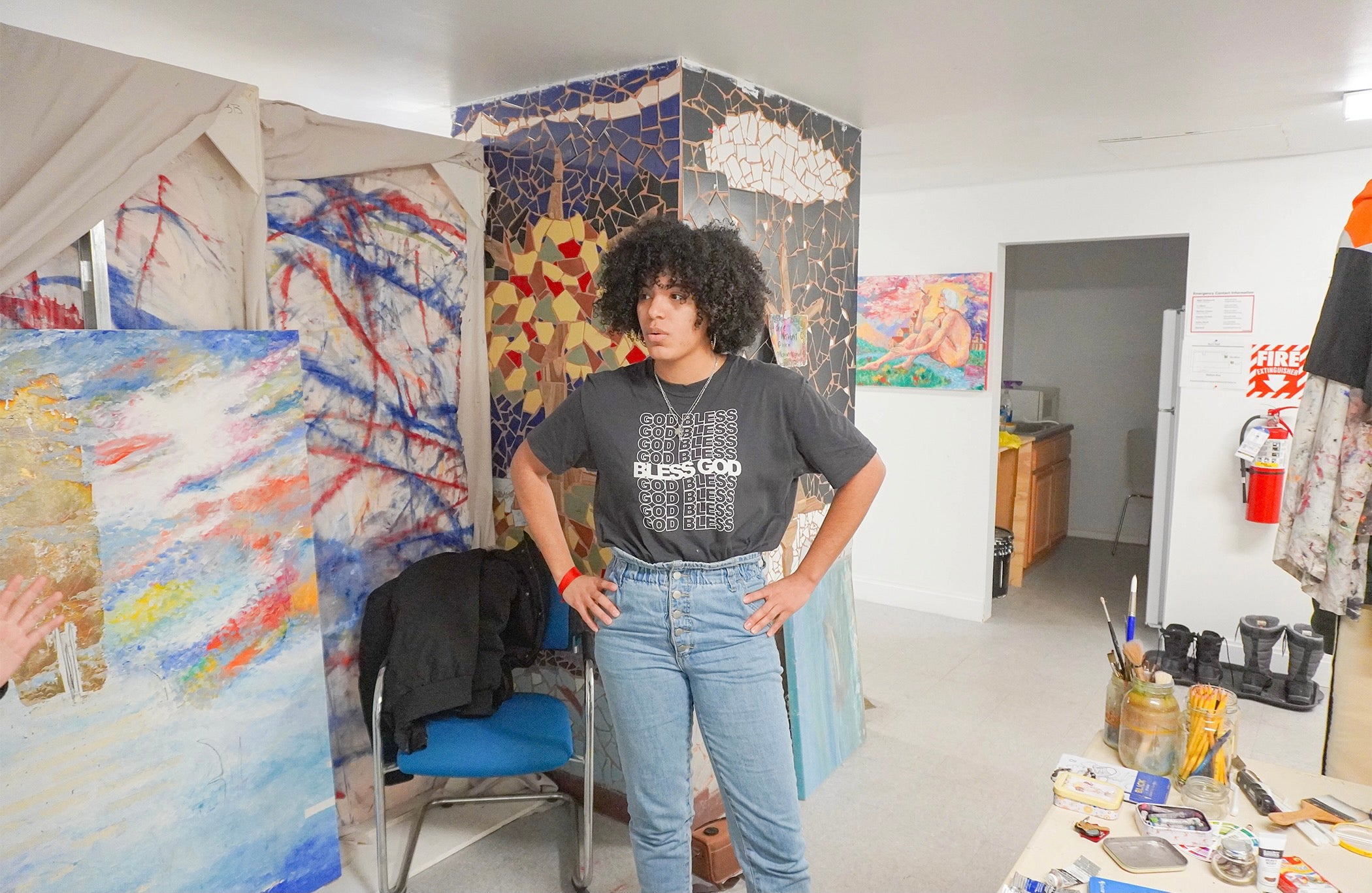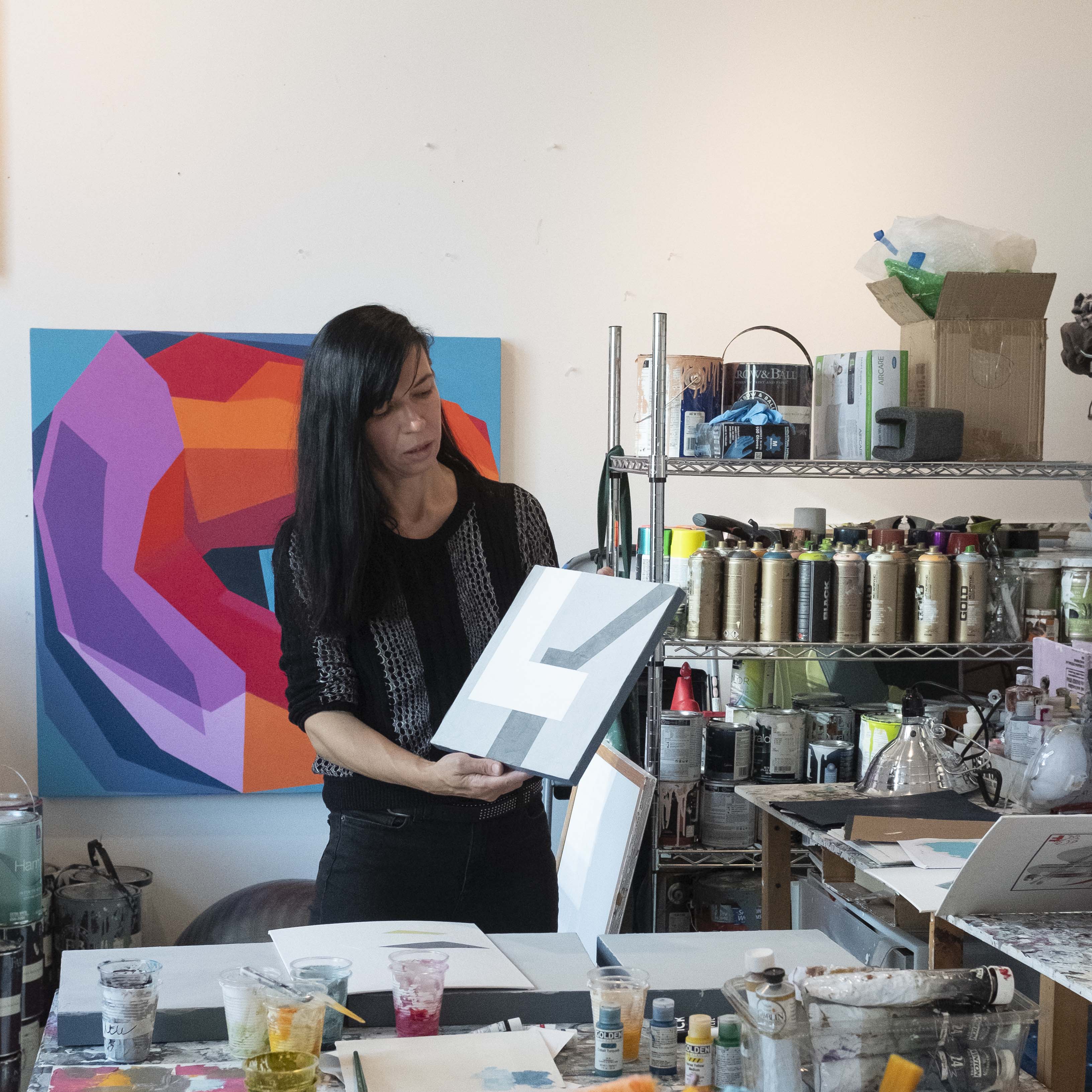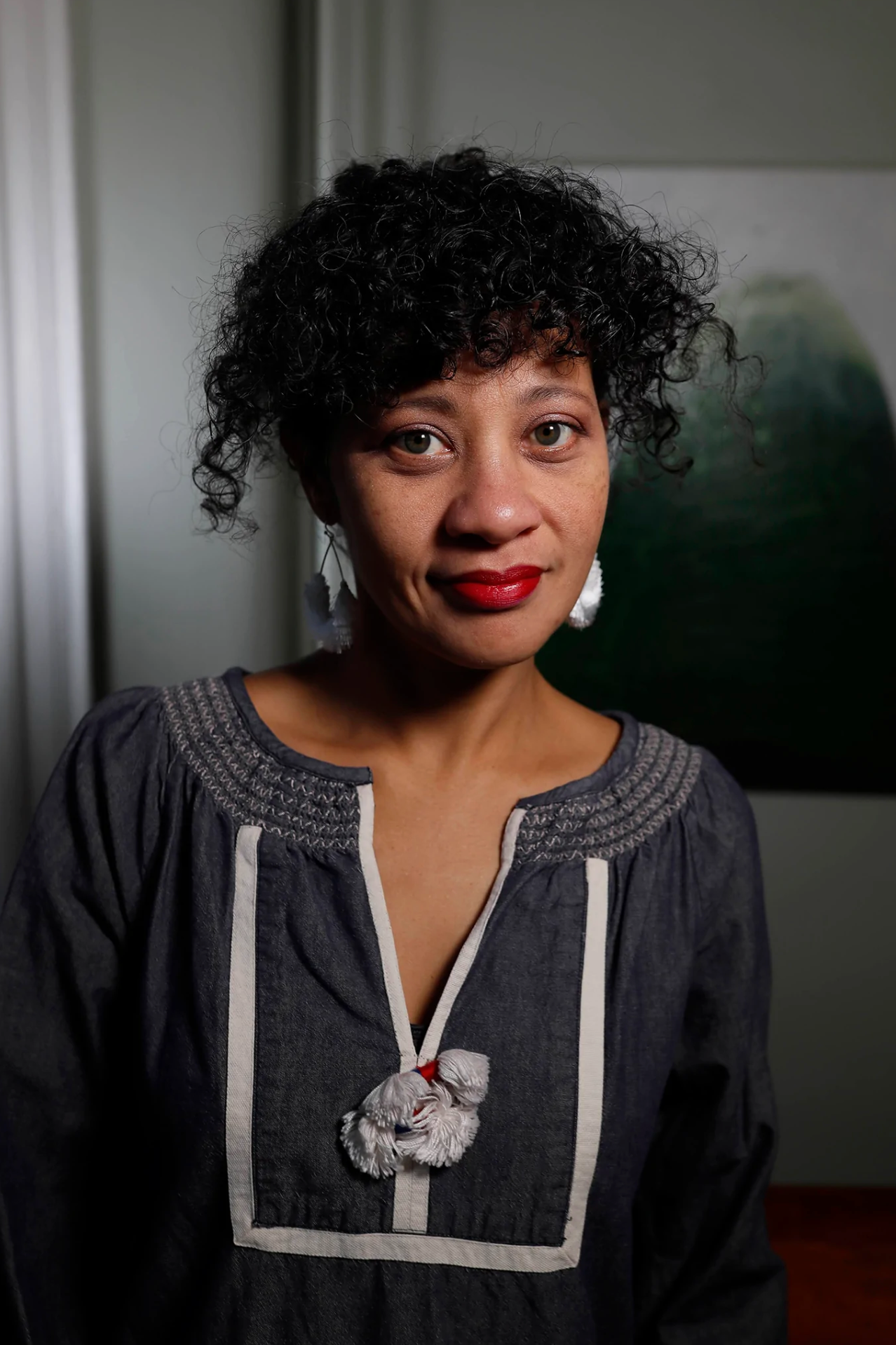No Products in the Cart
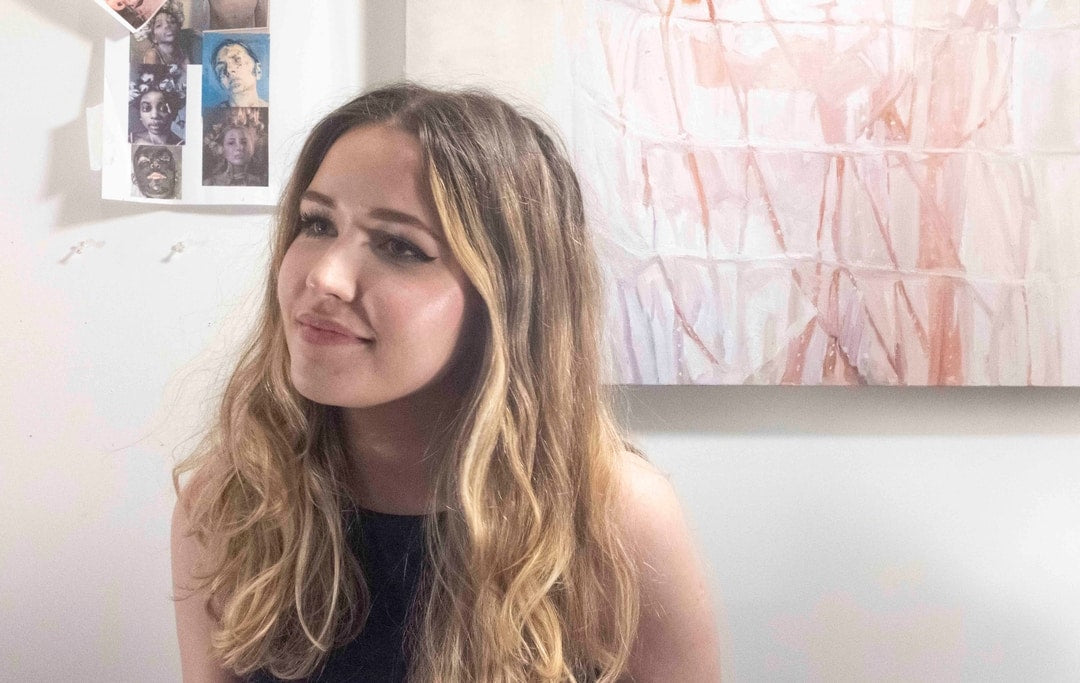
MEET AMY: UNCOVERING THE BEAUTY OF VULNERABILITY

The door to Amy’s studio opens to four female bodies wrapped in plastic shower curtains, putting the small space under disorienting calmness.
Coming from Liverpool, England, Amy now works out of this clean white box illuminated in warm orange light.
“I’ve been here long enough that when I go home my friends say that my accent is weird.”

Q1. When did you first started thinking about being an artist?
I never really thought that I’d be an artist. At first I thought I’d go into Architecture — I liked math. Coming to the States to study my MFA, and now teaching a class at the Academy, it’s really awesome, I never thought I’d get to do something like that. The journey of being an artist is all naturally evolving.
Professional? My last year as an undergrad, I had a piece bought by the Liverpool Hospital in England, they have like a huge painting of me, she laughs, in the hospital. It was at that point, I thought, okay, this is serious.
Q2. The majority of your work are female bodies, can you speak more on why you like to use bodies as your vessel?
I’ve always had an inherent fascination with bodies. My works are part autobiographical and part political, thinking about how we experience our bodies as women in this society and time. They are posing questions rather than finding solutions, like highlighting.
I’m interested in issues that women face, how women think about their bodies and how women have been portrayed in art history. I don’t think of my paintings as self-portraits, I use my body because that feels more authentic than having someone else take a pose.
“Oil has such a fleshy quality to it”
Q3. One thing that struck me about your work is their neutral tone of color. Can you speak more on why you chose to represent your work in these colors?
A lot of my paintings can have a quiet feeling to them. I’m trying to play around with presenting what may be difficult subjects in ways easier to engage. I used to present my paintings more confrontationally, like my meat-hanging pieces from 2016, but I find that confrontational works can be easily dismissed by people. So now I’m trying to find ways to make it more enticing. I use muted colors to draw people in.
Like in the Salmon painting –– with the background I was trying to create a white, clinical environment, and then there’s the Salmon on plate, like the woman reclining, posing nude. I wanted to emphasize the clinical feeling, the bizarre similarity between the salmon and woman’s flesh, and kind of straighten it.

Q4. Your work from 2014-2016 are quite different from your work now, from 2017 to 2019. You also grouped them separately on your website. Can you speak more on how you got here?
I feel like my work is going through cycles, moving away from certain things and returning to them in a new way.
The Salmon on plate painting was definitely a transitioning piece for me. I was going through that time when I was realizing that it wasn’t always necessary to make work that is grotesque and in your face — like hanging meat. This lead to the plastic series, they are smaller and more intimate, more feeling and feeling expressive. Not so much “changing the world” like I felt when I was younger, more creating experiences that people can all relate.
Now I’m moving away from some of the intimate jewel-like paintings, and doing a bit more visceral, blown-out paintings. But nowhere near as confrontational as it was in 2016.
Written by Sunny Liu



